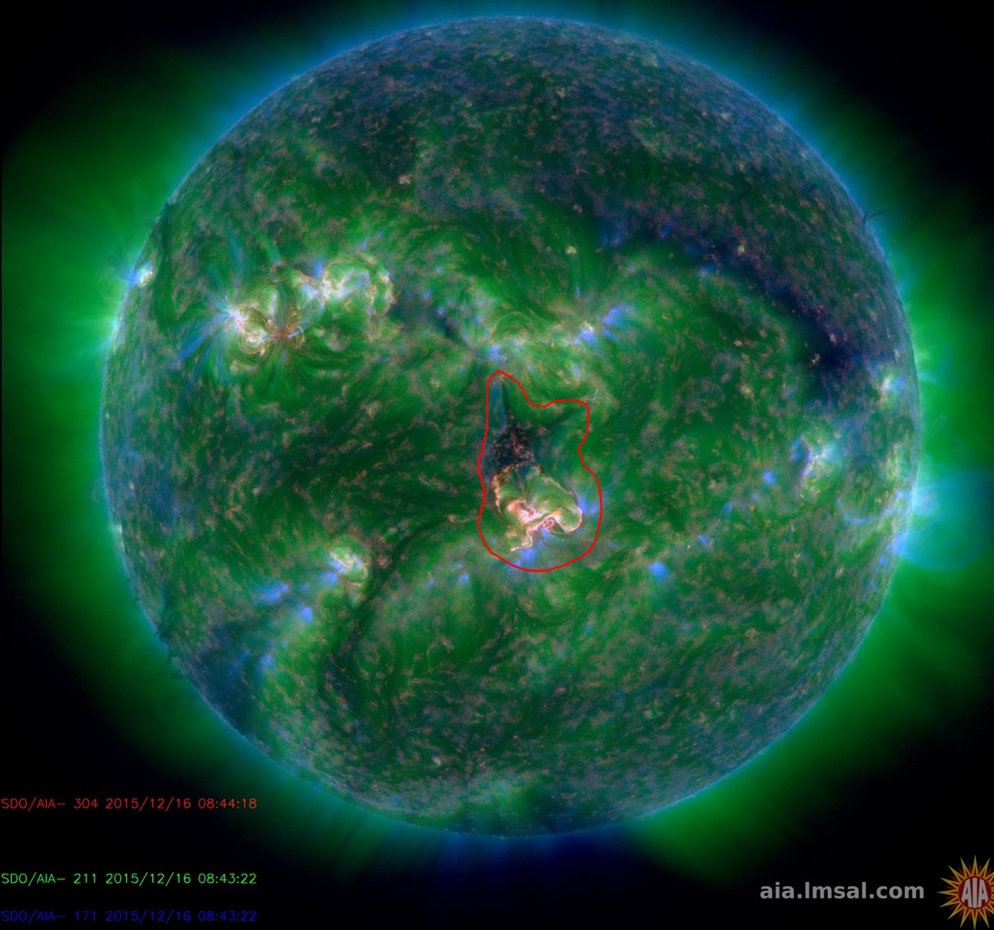Space Weather Alert - 18 December 2015
What Has Happened?
On 2015-12-16, the Sun launched 2 Coronal Mass Ejections. Neither was driven by a particularly energetic solar flare and the CMEs themselves are quiet slow. However, they are carrying a substantial amount of material and magnetic field towards Earth. We expect the CMEs to combine in flight and arrive at Earth during the (UK) night of 2015-12-18/2015-12-19. There is an increased chance of moderate geomagnetic storming on 2015-12-19.
Assuming clear dark skies, there is an increased chance of seeing the aurora once the CMEs arrive at Earth. Those in Scotland, northern England and Northern Ireland would be likely to have the best chance, if the weather were to be favourable and if geomagnetic activity levels are as expected.
Sign-up to receive Geomagnetic Disturbance Alert emails.
Follow us on Twitter:
Follow @BGSauroraAlert for more occasional aurora alerts.
Follow @BGSspaceWeather for daily space weather forecasts.
Glossary
- BGS
- The British Geological Survey is one of the Natural Environment Research Council's Research Centres.
CME or Coronal Mass Ejection- The eruption of a portion of the outer atmosphere of the Sun into space, caused by rapid changes in its magnetic field. Often occurs along with a solar flare.
- Solar Flare
- Energy released by the explosive reorganisation of magnetic fields within the Sun's atmosphere.
- Magnetogram
- The variation, minute by minute, of the strength and direction of the Earth’s magnetic field. Measured in units of nano-Tesla (for the strength of the field) or in degrees (direction of the field).
Solar Wind- The ever-present expansion of the Sun’s hot outer atmosphere into the solar system, which carries space weather within it.



